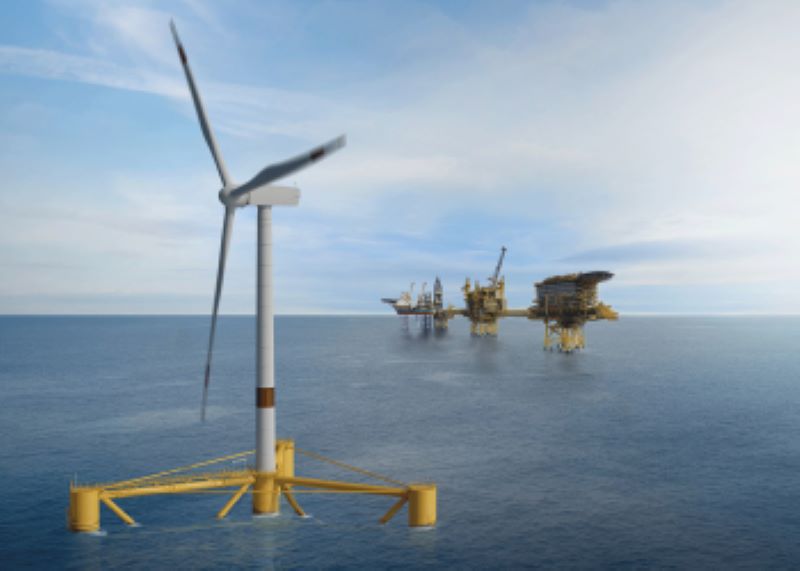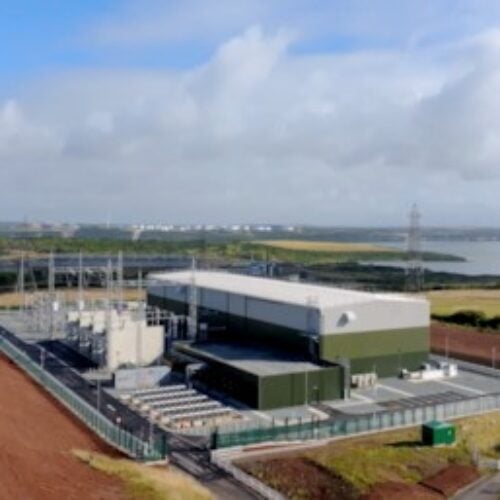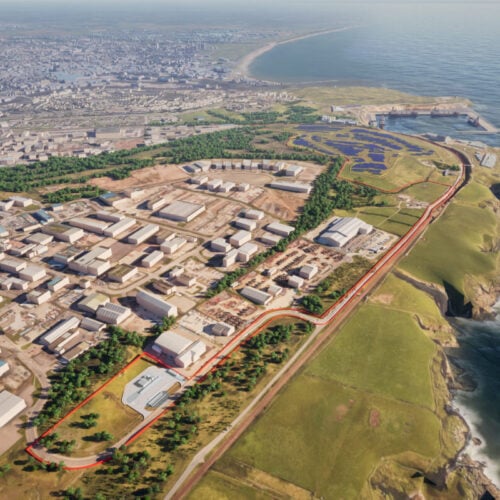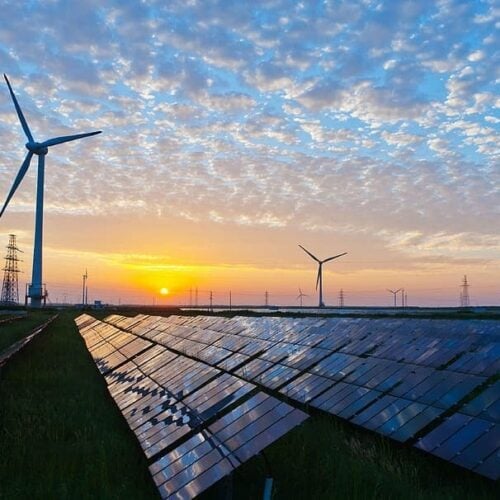French integrated energy and petroleum company TotalEnergies has launched a floating wind turbine that will supply renewable power to an offshore oil and gas platform in the North Sea.
The 3MW floating wind turbine, expected to be fully operational by the end of 2025, will be situated 2km west of the Culzean platform, 220km off the eastern coast of Scotland.
The turbine will be installed on a modular, light semi-submersible floater hull designed by Ocergy, a US-headquartered technology company that received investment from Octopus Energy’s generation arm earlier this year.
TotalEnergies says the turbine will supply around 20% of the platform’s power requirement, reducing its greenhouse gas emissions.
The pilot project was selected in Crown Estate Scotland’s Innovation and Targeted Oil and Gas (INTOG) leasing round, which encourages and supports the use of offshore wind energy to supply offshore oil and gas platforms.
Chief technology officer at TotalEnergies, Marie-Noelle Semeria said: “This innovative pilot project aims at proving the concept of hybridisation of power generation on an offshore facility, by integrating the generation of renewable electricity from a floating wind turbine with the existing power generation from gas turbines. It also aims at qualifying a promising floater design for the future of floating offshore wind.”
TotalEnergies’ integrated power strategy combines renewable power production and flexible power generation capabilities. Its joint venture with SSE Renewables, Seagreen Wind Energy Ltd, delivered the Seagreen Offshore Wind Farm – dubbed ‘Scotland’s largest offshore wind farm’.
In late 2023, the energy company invested to join the North Sea subsea wave power project off the east coast of Orkney, Scotland. The investment gave it access to all data and results from the test programme, whilst also receiving a feasibility assessment of the use of Renewables for Subsea Power (RSP) technology at a location of its choice.
Labour’s attitude to oil and gas
In March of this year, long before the general election, the Conservative government announced a slew of new gas-fired power plants that it said would “back up” renewables and prevent blackouts.
So, Labour’s electoral victory, built on a platform focused on the energy transition, was well-received. The party has made good on its promises to introduce windfall taxes for oil and gas companies: on 29 July this year, Labour chancellor Rachel Reeves announced further changes to the Energy Profits Levy (EPL), headlining a 3% increase from 35% to 38% to bring the rate of tax on upstream oil and gas to 78%.
Changes will also see the removal of the 29% investment allowance from 1 November this year, but the 80% decarbonisation investment allowance will be maintained.
That said, the party has faced criticism for hesitating to end all licensing for offshore oil and gas plants, a move that it says will prevent mass layoffs. It will also headquarter its flagship Great British Energy company, funded in part by the windfall tax, in Scotland, where many rely on the North Sea oil and gas industry for income.






